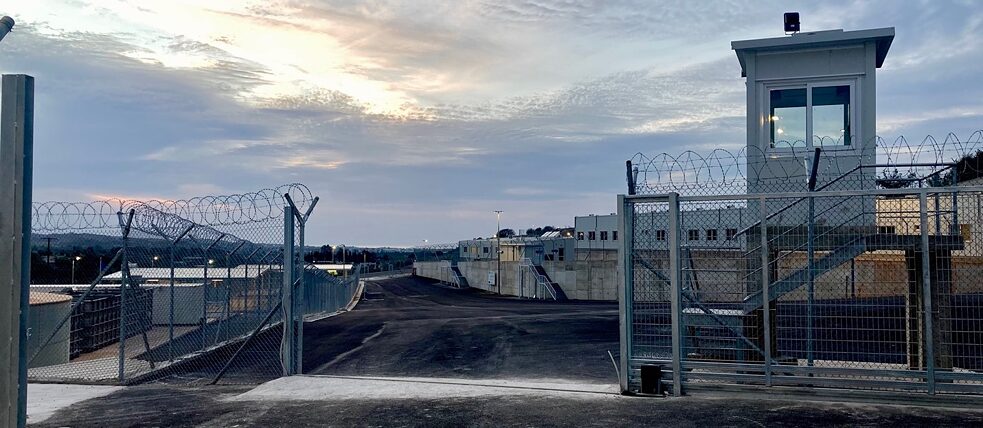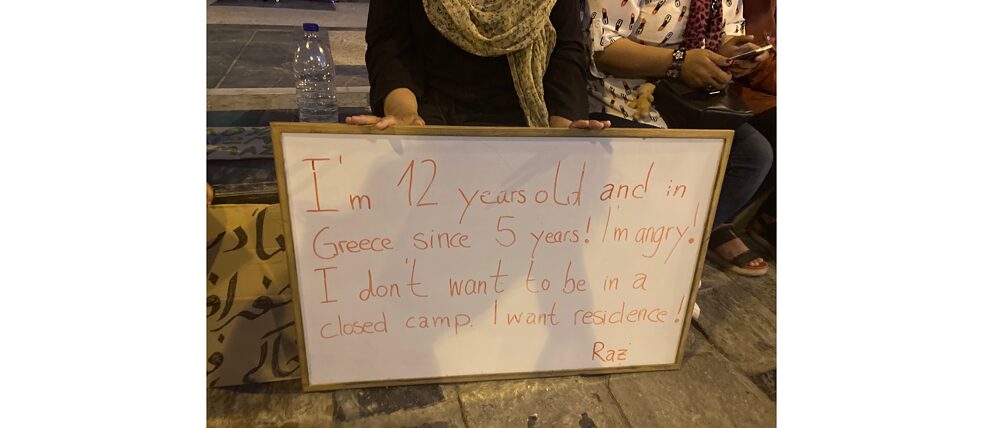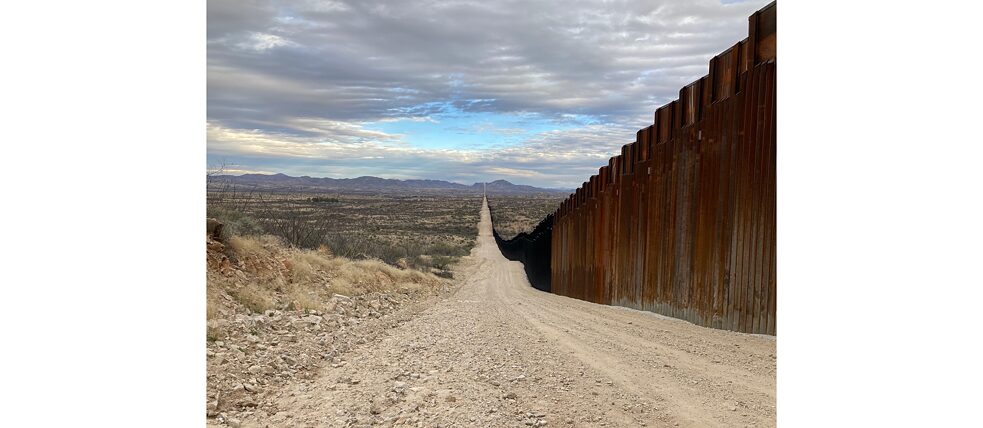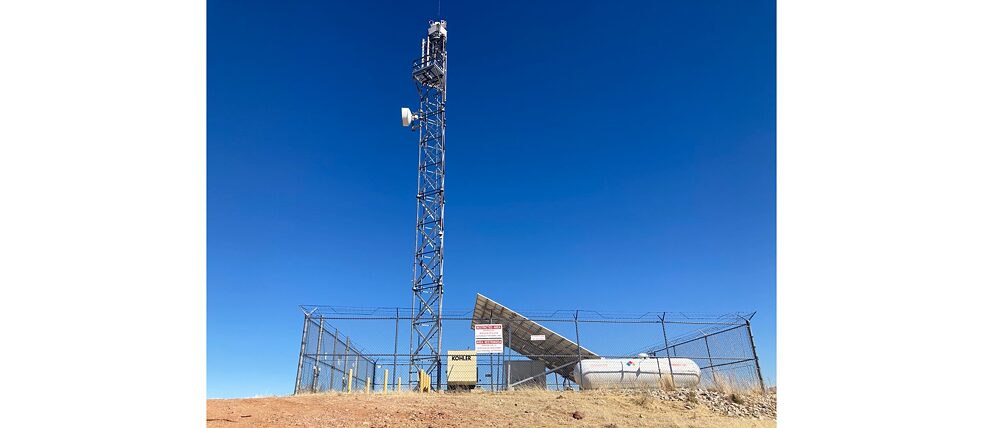AI Surveillance
Technological Violence Through High-Risk Experiments at the Border

AI surveillance, drones, iris scanning: fleeing is often perceived as chaotic and confusing, but many states and border protection agencies know exactly who is moving where and when. Lawyer Petra Molnar specialises in technology and migration and sheds light on the techniques used to monitor refugees.
“I hope to see my children in a place where they can play.” Aisha,* a 31 year old mother of three looks into the distance as she recounts how she and her boys survived a pushback.
The shimmering Aegean before us is a watery graveyard. Aisha is a survivor of domestic violence, and her journey has taken her from Palestine through Turkey to the shores of Greece. She attempted to cross through the land border at Evros before but was forced back to Turkish territory and out of desperation put her boys in a rubber boat and made her way with a larger group to the Island of Samos. Aisha and her boys managed to make it to safety, connect with Dimitris Choulis, a local lawyer, and successfully received asylum. The rest of their group was not so lucky, with 28 people reappearing on Turkish soil days later. In a previous pushback on Samos in 2021, a little boy died. As recently as August 2022, a 5 year old girl from Syria reportedly died at the Greece-Turkey border as her family attempted to avoid a pushback.
Increasingly, these pushbacks are facilitated with more and more invasive technologies. FRONTEX, the EU’s border force, is leading the way in exploring various surveillance technologies, commissioning studies on the use of AI, and piloting surveillance technologies assigning in interceptions. However, unauthorized returns or ‘pushbacks’ violate virtually every law on the books, including the foundational principle of refugee law, non-refoulement, or the idea that a state that has ratified the Refugee Convention, cannot return a person to a country where they may face persecution or violence, especially when they have not yet had the opportunity to apply for refugee status. This does not seem to matter in the fervent push to introduce more and more technology at the border.
AI-Powered Lie Detectors
Various other EU-funded projects make it increasingly harder for people to claim asylum, such as ROBORDER, which ‘[aims] to create a fully functional autonomous border surveillance system with unmanned mobile robots including aerial, water surface, underwater and ground vehicles’ while painful sound-cannons, or Long Range Acoustic Devices (LRADs) which have been deployed in the Evros region between Turkey and Greece. More and more, violent uses of technology work to push European borders farther afield, contributing to policies of border externalization, making Europe’s migration management someone else’s problem. These policies have direct and dire consequences – drownings in the Mediterranean, pushbacks to Libya and Turkey, including using floating tents, and years-long detention in decrepit refugee camps like Moria, and other sites on islands like Samos, Chios, and Kos. Refugee camps themselves are increasingly replete with surveillance, data collection, radars, drones, and AI. Five new camps are being built in Greece for example, with billions of Euro used for algorithmic motion detection surveillance. Two have already opened, one on Samos and one on Kos. Yet while funding on surveillance and tech, the new Samos camp has had no running water, inadequate food, and terrible living conditions. 12-year-old Raz protests against the opening of the new camp on Samos in September 2021.
| Photo: © Petra Molnar
Other types of experimental border technologies which I have been tracking over the last five years include AI-powered lie detectors tested at the border like the iBorderCRTL project, mass biometric data collection in refugee camps, including fingerprinting and iris scanning, algorithms making decisions about whether to place someone in detention or even assist in their risk assessment for deportation, and dystopian robo-dogs, quadruped military grade technology deployed at the US-Mexico border. From Greece to Arizona to Poland to Kenya, the global appetite for border technologies is only increasing.
12-year-old Raz protests against the opening of the new camp on Samos in September 2021.
| Photo: © Petra Molnar
Other types of experimental border technologies which I have been tracking over the last five years include AI-powered lie detectors tested at the border like the iBorderCRTL project, mass biometric data collection in refugee camps, including fingerprinting and iris scanning, algorithms making decisions about whether to place someone in detention or even assist in their risk assessment for deportation, and dystopian robo-dogs, quadruped military grade technology deployed at the US-Mexico border. From Greece to Arizona to Poland to Kenya, the global appetite for border technologies is only increasing. Border Wall bisects the Sonora Desert between Arizona, US, and Mexico, a site of technological experimentation.
| Photo: © Petra Molnar
Border Wall bisects the Sonora Desert between Arizona, US, and Mexico, a site of technological experimentation.
| Photo: © Petra Molnar
Multi-Billion Dollar Border Industry
Certain places like borders serve as testing grounds for new technologies, places where regulation and oversight is already limited and where an ‘anything goes’ frontier attitude informs the development and deployment of surveillance at the expense of humanity. This lack of regulation is deliberate because borders and migration are spaces with huge power imbalances. Communities that are marginalized such as non-citizens, refugees, and people on the move often have access to less robust human rights protections and fewer resources with which to defend those rights as these technological interventions become increasingly normalized. Powerful actors like states and the private sector are able to justify increasing technological experiments in migration because people on the move have been historically rendered as a population which is intelligible, trackable, and manageable.There is also big money to be made in big border tech. The growing multi-billion dollar border industrial complex underpins the development and deployment of high-risk new technologies, governed by private sector players with dubious human rights records like various Israeli surveillance firms like Elbit Systems and Cellebrite, Palantir Technologies, and Clearview AI, among many others. Private companies are setting the migration control agenda as states rely on the private sector to develop and deploy technologies used to control migration. As a result, government liability and accountability get watered down and shifted to the private sector, where the legally-enforceable rights that allow individuals to challenge governments often do not exist. People on the move get caught in the middle, leading to grave human rights abuses and infringements on fundamental freedoms.
 Elbit Systems AI Surveillance Tower in Arizona, United States, in February 2022.
| Photo: © Petra Molnar
Elbit Systems AI Surveillance Tower in Arizona, United States, in February 2022.
| Photo: © Petra Molnar
Viewpoints of Those Most Affected Are Routinely Excluded from Discussion
Ultimately, the purpose of the technologies used in migration management is to track, identify, and control those crossing borders. The issues around emerging technologies in the management of migration are not just about the inherent use of technology but rather about how it is used and by whom, with states and private actors setting the stage for what is possible and which priorities matter.Technology replicates power structures in society. While conversations around the ethics of AI are taking place, ethics do not go far enough, as they are culturally coded and can be co-opted to silence collective, systemic harms that are actively being perpetuated. This includes the abolition of migration management technologies at and around the border, technologies that exacerbate systemic racism, historical surveillance of communities routinely made marginalized, and creating a panopticon of control that catches people like Aisha in its violent grasp. Unfortunately, the viewpoints of those most affected are routinely excluded from the discussion, particularly around areas of no-go-zones or ethically fraught usages of technology.
Watching a little boy splash around in the waves of the Aegean, it’s hard to know if the tourists holidaying in Greece know that mere minutes away from the beach, other little boys wait on the whims of the EU, or worse yet, never even make it to the beach alive. For Aisha and her boys, the sharp technological experiments have been just one part of a violent global migration machine which they have to navigate as they seek safety.
*Name and identifying characteristics have been changed. Story shared with permission*